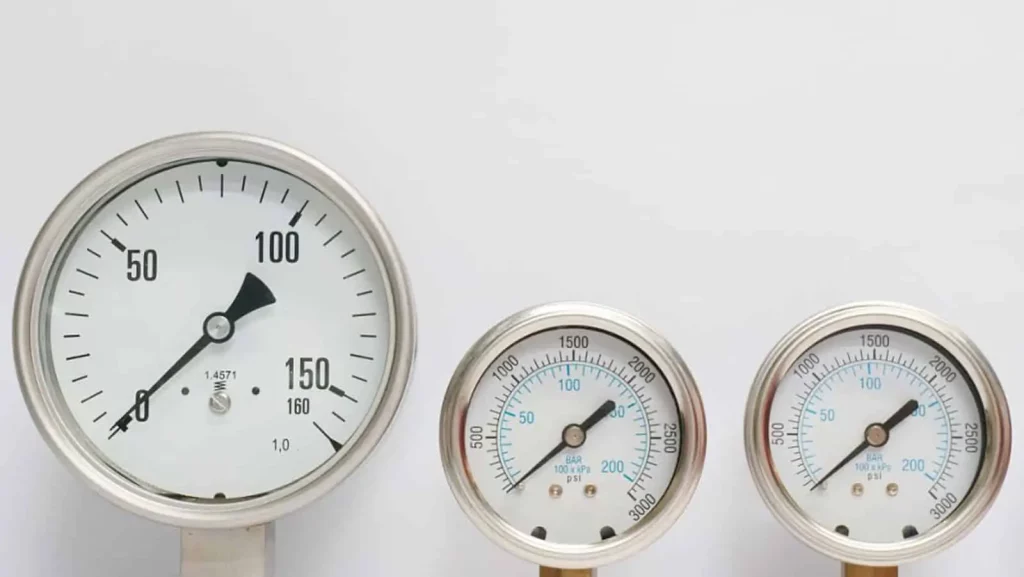
What Is A Vacuum Pressure Gauge?
Vacuum pressure gauges are based on atmospheric pressure and are used to measure less than atmospheric pressure. The vacuum pressure gauge is suitable for measuring the vacuum pressure of liquids and gases that have no explosion, no crystallization, no solidification, and no corrosive effect on copper and copper alloys. Widely used in gas transportation, measuring the pressure of various liquids, gases, steam and other media that are non-corrosive, non-explosive, non-crystalline, non-solidified, such as various industrial automation environments, involving petroleum Pipelines, water conservancy and hydropower, railway transportation, intelligent buildings, production automation, aerospace, military industry, petrochemical, oil wells, electric power, ships, machine tools, pipeline air supply, vacuum equipment and many other industries
How Does A Vacuum Pressure Gauge Work?
The vacuum pressure gauge deforms the pressure-sensitive components through the Bourdon tube, bellows or bellows, and then transfers the deformation pressure to the pointer through conversion to cause the pointer to rotate. Its composition is also very simple, consisting of three parts: pointer, glass panel and overflow. The function of the overflow port is that if the pressure in the device is too high, in order to prevent the dial glass from exploding and threatening our personal safety, the excessive pressure will open the overflow port to release the gas in the dial.
Different Types Of Vacuum Pressure Gauges
It can be divided into standard ordinary type, h heat-resistant type, m steam-used ordinary type, v shock-resistant type, mv steam durable type and hv heat-resistant and shock-resistant type from the difference of applicable objects and fields. Before installation, it is strictly forbidden for the vacuum pressure gauge body to come into contact with oil or water. If it is accidentally touched, immediately use absorbent paper to absorb the water or oil, otherwise it will affect the display of the dial.
Features of Vacuum Pressure Gauge
One of the characteristics is that the equipment has high stability, fast measurement speed and high accuracy. The second feature is that there are no parts that are afraid of high temperature inside the vacuum pressure gauge, so it will never be melted by high temperature steam or oil. The third feature, its structure is very stable, it is difficult to deform, and it is easy to transport and install. The fourth feature is that the measured value is not affected by the type, density, temperature and other conditions of the medium.
The Difference Between Vacuum Pressure Gauge and Ordinary Pressure Gauge
1. Different functions
- Vacuum gauge: based on atmospheric pressure, it is used to measure less than atmospheric pressure.
- Ordinary pressure gauge: refers to a gauge that uses elastic elements as sensitive elements to measure and indicate pressure higher than the ambient pressure.
2. the application is different
- Vacuum gauge: Pressure vacuum gauge and vacuum gauge are used to measure liquid or gas that has no corrosive effect on steel, copper, and copper alloys, and has no explosion hazard.
- Ordinary pressure gauge: It can be seen everywhere in the fields of heating pipe network, oil and gas transmission, water and gas supply system, vehicle repair and maintenance factories, and stores. Especially in the process of industrial process control and technical measurement, because the elastic sensitive element of the mechanical pressure gauge has the characteristics of high mechanical strength and convenient production, the mechanical pressure gauge has been more and more widely used.



